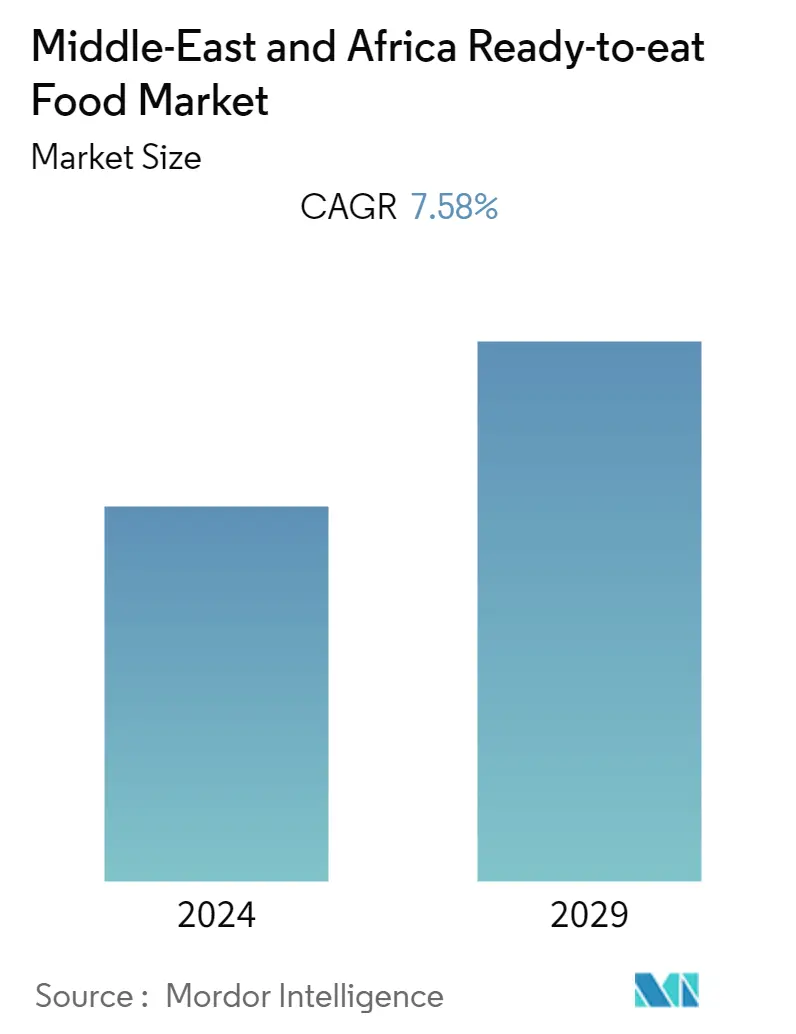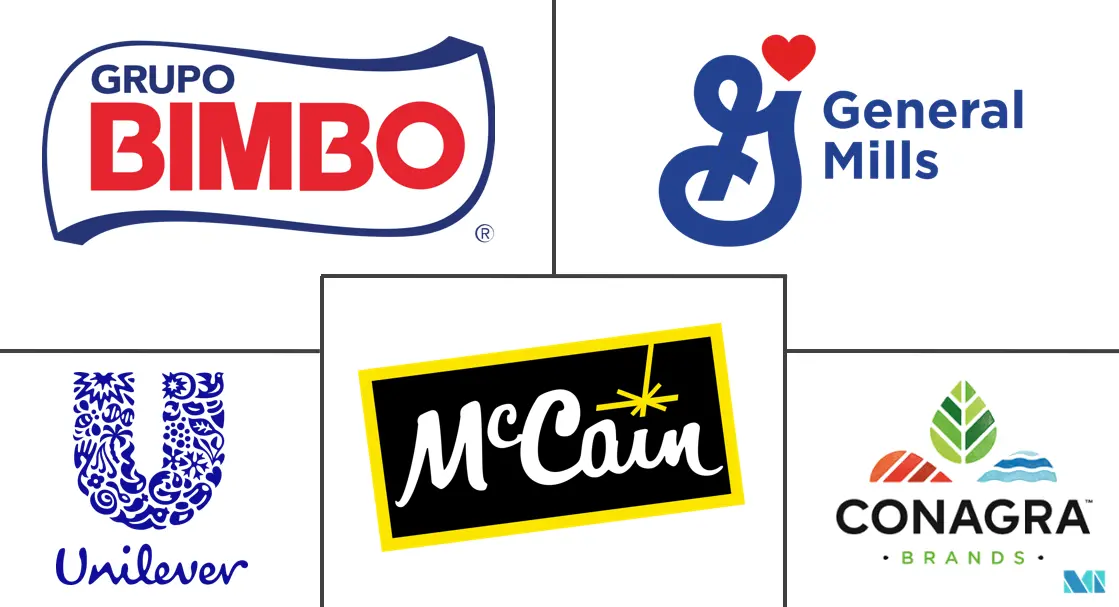Market Size of Middle-East and Africa Ready-to-eat Food Industry

| Study Period | 2019 - 2029 |
| Base Year For Estimation | 2023 |
| Forecast Data Period | 2024 - 2029 |
| Historical Data Period | 2019 - 2022 |
| CAGR | 7.58 % |
| Market Concentration | Low |
Major Players
*Disclaimer: Major Players sorted in no particular order |
Need a report that reflects how COVID-19 has impacted this market and its growth?
MEA Ready-to-eat Food Market Analysis
Over the next few years, the Middle East and Africa Ready-to-Eat Food Market is expected to register a CAGR of 7.58 %.
The major factor driving the growth of the ready-to-eat food market is convenience. Young consumers spend most of their income on convenient, ready-to-eat food products. Other factors affecting the market are the changing food consumption patterns due to increasing urbanization, which is driving the ready-to-eat food market in the region. In addition, a high focus on exports, the adaptation of new technologies, innovative promotional techniques, gaining special attention in retail format stores, retailers going for private label ready-to-eat meals, launching innovative and region-specific products, and frozen ready-to-eat products gaining popularity are other factors fueling the market's growth.
The demand for healthy convenience foods and processed foods such as ready-to-eat foods is increasing. To take advantage of such opportunities in the market, new players have been entering it. For example, in March 2022, the startup company Nowadays Trading launched FatBroccoli products, which offer naturally sourced, locally manufactured, nutritious frozen foods. The healthful fast food was initially sold in places with heavy foot traffic, such as schools, gyms, universities, hospitals, gas stations, government buildings, service centers, airports, and others. To further its reach beyond the United Arab Emirates, FatBroccoli revealed its plans to open 20 additional locations in other GCC regions. With the rise in urbanization, a growing middle-class population, an increase in the number of working women, and a rise in disposable income, the region has been witnessing a rising demand for ready-to-eat products such as biscuits, cakes, breakfast cereals, and other such items as they are more convenient than complex traditional home-made items, which take much longer to prepare. Further, new hybrid working patterns and significant investments people made in their homes in the post-pandemic era point to a larger number of ready-to-eat food products consumed at home for the foreseeable future.
